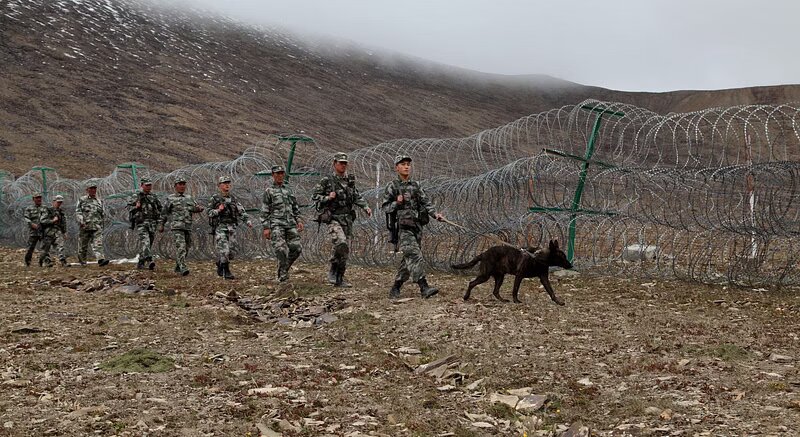The Indian military is very worried about all of the building that China is doing in Bhutan’s Amo Chu river valley. Amo Chu is right next to the important Doklam ridge, from which the PLA (People’s Liberation Army) of China can see India’s Siliguri corridor. It is not very far from the India-China-Bhutan Doklam tri-junction, where India and China got into a big military fight in 2017 over Beijing’s building of a road.
The PLA has built fixed housing for its troops and communication towers in Amo Chu. In the past few months, close to 1,000 permanent military huts and many temporary sheds have been built to house tens of thousands of PLA troops.
After the Indian Army fought back hard in Doklam, the PLA is trying to get to the same hill from a different direction to get around Indian defenses to the west of Doklam.
Doklam is a remote plateau, and neither Chinese nor Bhutanese troops patrolled it much before the Indian military showed up in 2017. China says that Bhutan is part of its land because of its past. In 1960, the Chinese government said that Bhutan, Sikkim, and Ladakh were all part of one country called “Tibet.”
Indian military planners think that any action in Bhutanese territory west of Doklam that is controlled by China would be bad for India’s security. Experts on Indian security say that if the Chinese are in charge of the Doklam plateau, they will have military advantages. The Doklam plateau looks out over the vital Siliguri corridor to the south and has a great view of the Chumbi Valley, which is between Bhutan and Sikkim.
After India and China had fights at the border at Nathu La and Cho La mountain passes in Sikkim in 1967, the Chinese troops disputed the Indian border on the Dongkya mountain range in Sikkim. Since the Indian force was on higher ground, they were able to destroy many Chinese defenses. Even now, it is thought that the Chinese military is weaker in the Chumbi because Indian and Bhutanese troops control the hills around the valley.
A few weeks ago, the top leaders of the Indian Army met with Indian officials in the Haa area who were helping the Bhutanese military get stronger. At the meeting, the huge Chinese buildup was brought up. Haa district is right next to the disputed areas where China is building new towns, to the east.
Bhutan’s Prime Minister Lotay Tshering recently caused a stir when he said that Beijing should have an equal say in finding a solution to the disagreement over the Doklam plateau, which India says China is illegally occupying. In 2017, the Indian Army stopped the Chinese military from illegally entering the area. This forced the Chinese military to leave.
In an interview with a Belgian publication, Tshering said that bilateral talks to solve the long-running boundary dispute between Bhutan and China had hit an advanced stage. In February, a group from the Bhutan government went to Beijing, and he said that a “technical team” from China was on its way to Bhutan soon.
Located in South Block Indian military experts aren’t sure if all of this means that Bhutan might be ready to give China the land it lost on its western border in order to keep the land in the north.
